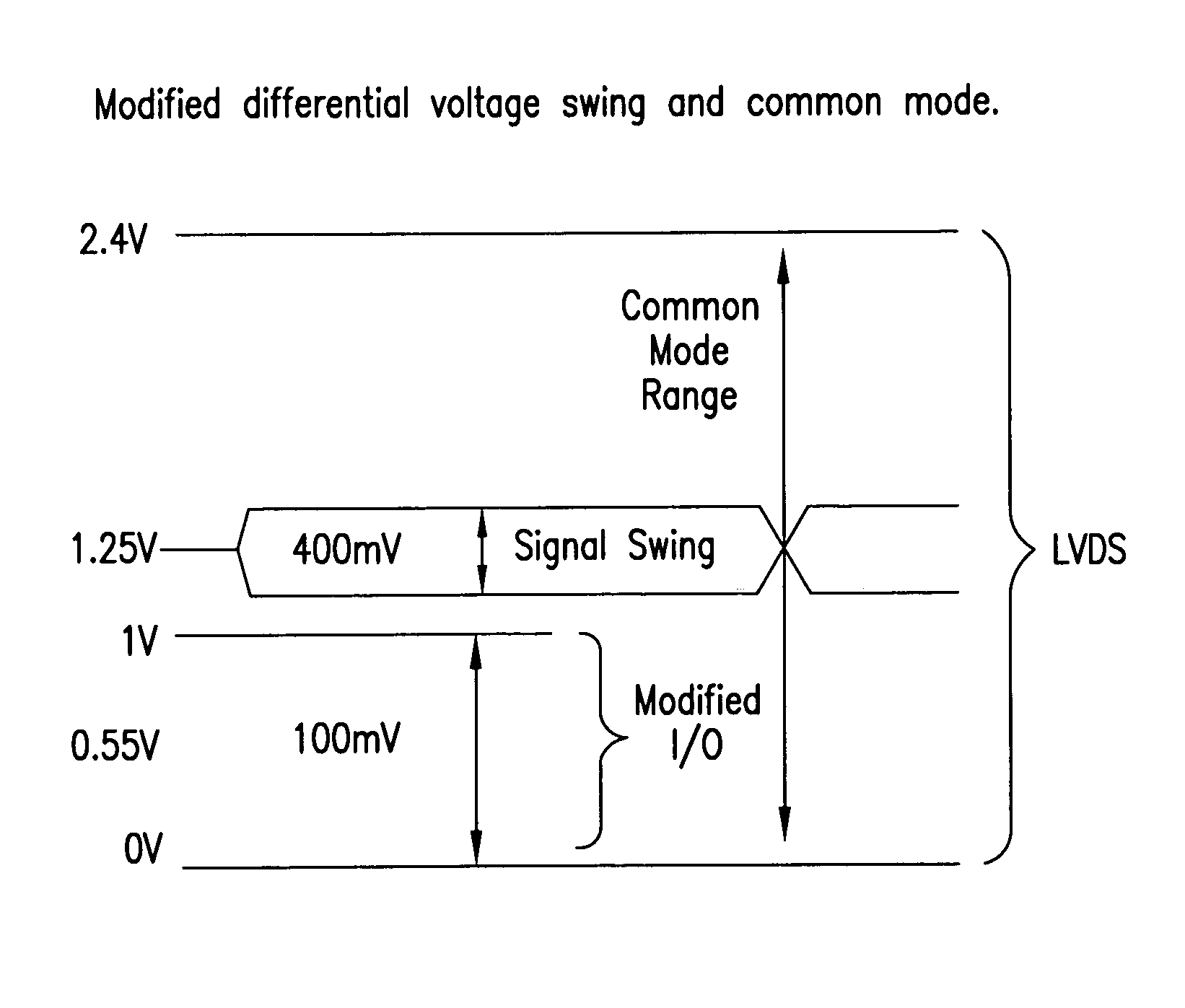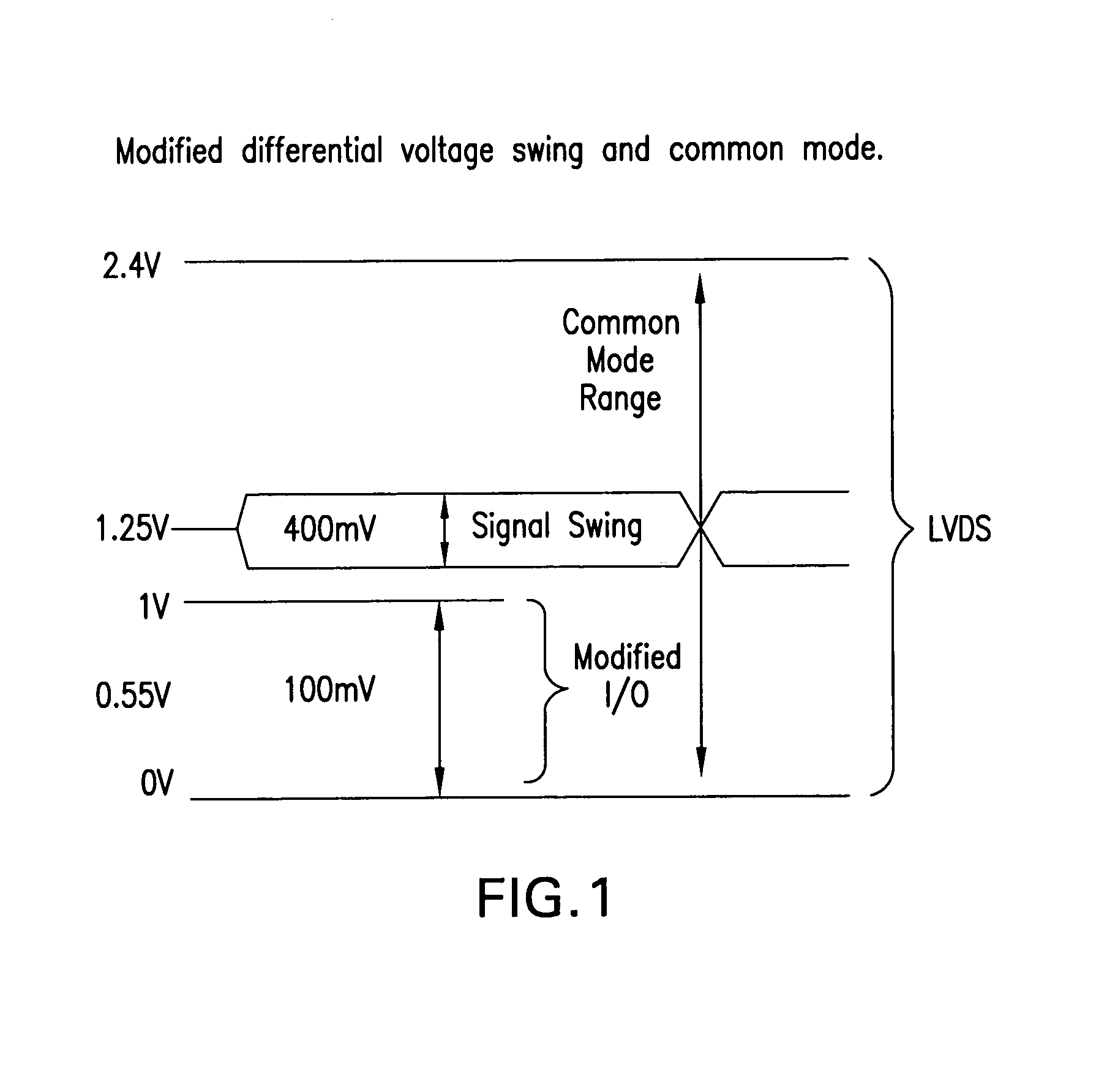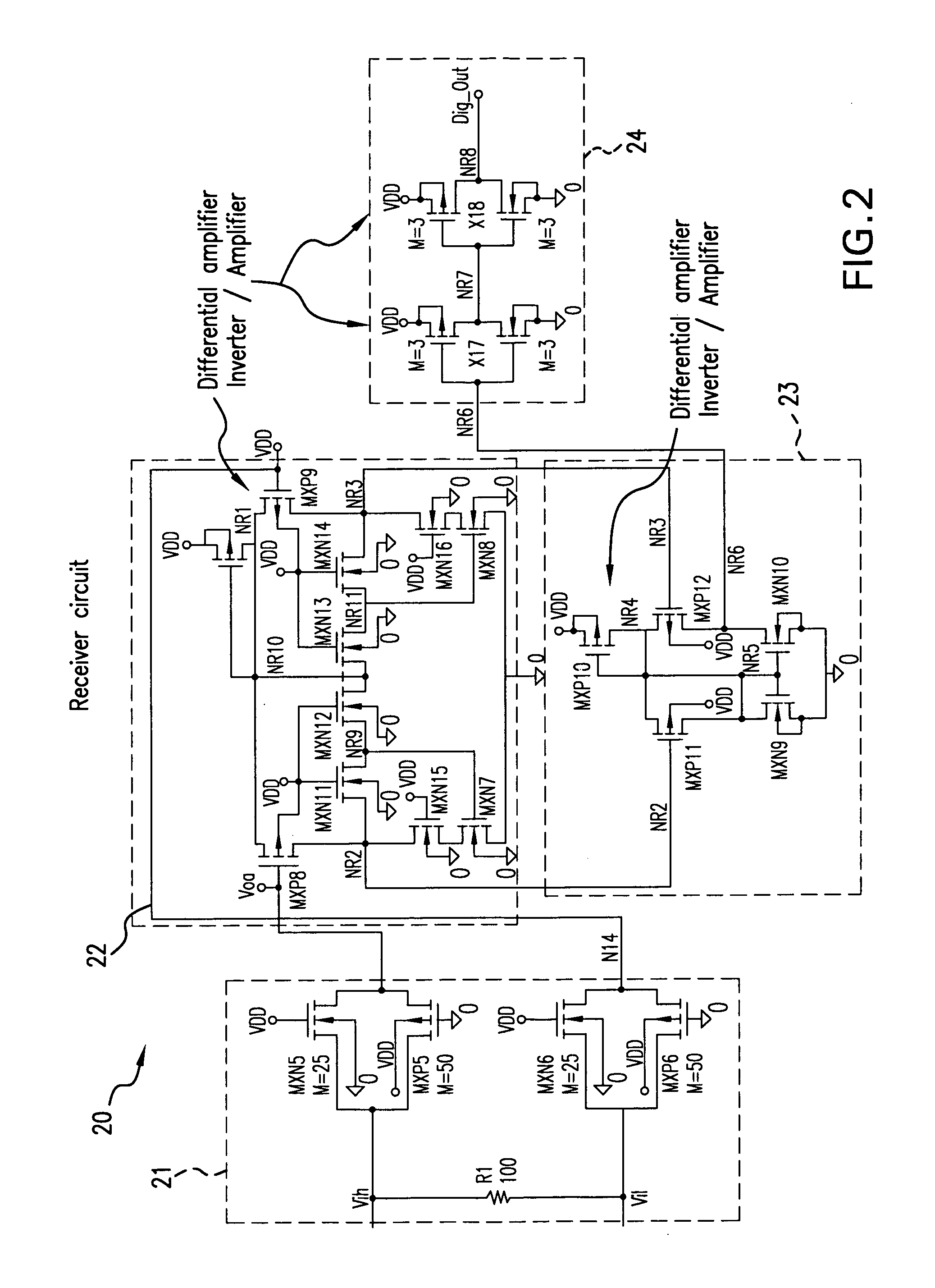High speed chip-to-chip communication links
a communication link and high-speed technology, applied in the direction of logic circuit coupling/interface arrangement, digital transmission, pulse technique, etc., can solve the problems of too limited to approximately 10 gbps per channel, limitations in certain applications,
- Summary
- Abstract
- Description
- Claims
- Application Information
AI Technical Summary
Benefits of technology
Problems solved by technology
Method used
Image
Examples
Embodiment Construction
[0019]FIG. 1 illustrates the difference between a conventional LVDS signaling standard and the modified design according to one preferred embodiment of the invention. As shown, according to a conventional LVDS standard, a common mode voltage range of 2.4 V, and a differential signal swing of 400 mV at 1.25 V are used. According to one embodiment of the present invention, a modified common mode range of 1 V is used, along with a differential signal swing of 100 mV at 0.55 V. In order to realize the use of such modified levels, new designs of circuit components for both a receiver and driver circuit are provided.
[0020]Referring to FIG. 2, one preferred embodiment of a receiver circuit 20 according to the present invention is disclosed. A first stage of the receiver circuit is an ESD protection stage 21, including a pair of modified transmission gates, a first of which receives a high differential voltage input Vih, and a second of which receives a low differential voltage input Vil, a...
PUM
 Login to View More
Login to View More Abstract
Description
Claims
Application Information
 Login to View More
Login to View More - R&D
- Intellectual Property
- Life Sciences
- Materials
- Tech Scout
- Unparalleled Data Quality
- Higher Quality Content
- 60% Fewer Hallucinations
Browse by: Latest US Patents, China's latest patents, Technical Efficacy Thesaurus, Application Domain, Technology Topic, Popular Technical Reports.
© 2025 PatSnap. All rights reserved.Legal|Privacy policy|Modern Slavery Act Transparency Statement|Sitemap|About US| Contact US: help@patsnap.com



